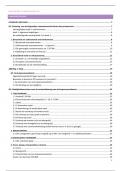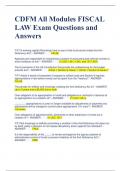Computed voltage distribution in ZnO arrester under
pollution by finite element method
Ferhat TIGHILT Abdelhafid BAYADI
Laboratoire d’Automatique Laboratoire d’Automatique
Département d’Electrotechnique Département d’Electrotechnique
Faculté des sciences de l’ingénieur Faculté des sciences de l’ingénieur
Université Ferhat ABBAS de Setif Université Ferhat ABBAS de Setif
E-mail : tighiltferhat16@ Gmail.com
Abstract- The voltage and electric field distribution in an typical polymeric zinc-oxide surge arrester taking into account
arrester are very important for its long operation 15 kV with and the pollution. Preliminary results for considered levels of
without pollution. In order to clarify the influence of pollution
severity condition on metal oxide surge arrester, the finite element pollution layer conductivity are presents and discussed.
method (FEM) compilation of the voltage distribution in the ZnO
column varistors under different pollution layer conductivity II. ARRESTER MODEL
µS, 20µ
(70µ µS, 1nS) was employed.
The surge arrester modelled in this work is a commercially
Keywords: ZnO arrester performance, Finite element
available distribution polymeric housed distribution arrester
method, voltage distribution, pollution
rated at 15kV.
Fig. 1 shows the construction details of the arrester. The
I. INTRODUCTION arrester polymeric housing is made of Ethylene Propylene
Diene Monomer (EPDM), a synthetic hydrocarbon rubber with
Zinc oxide (ZnO) surge arresters have been used extensively a relative permittivity εr = 3.9. In the housing, they are three
in high voltage power systems for providing protection to the zinc-oxide elements (60 < εr, < 1000) [4] are mounted in series
insulation in power apparatus against different forms of between two aluminium-alloy terminal blocks. A permanent
overvoltages. The life of these arresters is dependent on their homogeneous resin and glass fibre bond (εr= 4.6) encases the
steady state performance. It has been observed in practice that element/terminal assembly to provide a high mechanical
the voltage distribution in the arrester is quite non-uniform. As strength and a void-free dielectric interface at the walls of the
a result, the discs at the top are subjected to higher voltage than zinc oxide elements [5]. In this work a relative permittivity
the remaining discs. This leads to a faster thermal ageing of the (εr=106) of the metallised faces of the zinc-oxide elements was
discs at the top. To overcome this problem efforts are generally used.
made to make the voltage distribution as uniform as possible.
Thus, the voltage and electric field distribution in an arrester
are very important for its long operation performance.
Metal oxide surge arresters without gaps are continuously
stressed at the system voltage. This leads to small leakage
current levels flowing through the arrester elements. These
currents are in the range of several microamps to several tens
of microamps. Under steady state conditions the total leakage
current is composed of a large capacitive component and a
small resistive part, which leads to consider that the voltage
distribution is mainly determined by the arrester capacitances
[1, 5, 2]. Ideally, the potential gradient along the arrester
should be uniform. The capacitance of each element can be
determined approximately from the geometry and permittivity
of each element, when neglecting the effect of stray fields.
However, for a more accurate computation of the potential
distribution and arrester capacitances (including stray
capacitances), a field computation using a finite-element
package is required [5].
In the present paper, the authors have used FEMLAB Fig. 1 Construction details of the modelled arrester
Reproduced from [5].
package [3] to compute the voltage and field distributions on a










